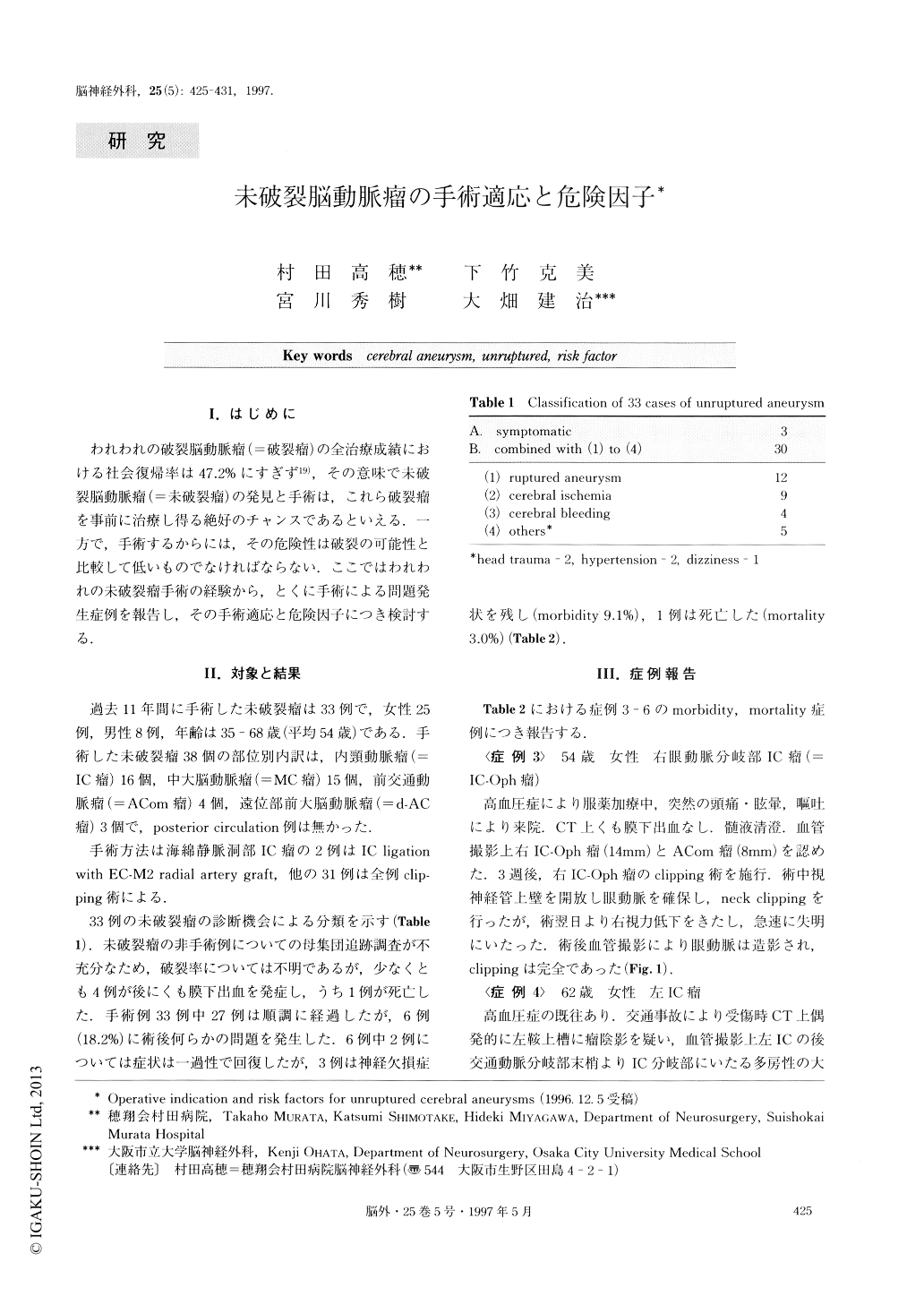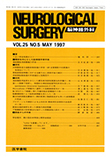Japanese
English
- 有料閲覧
- Abstract 文献概要
- 1ページ目 Look Inside
I.はじめに
われわれの破裂脳動脈瘤(=破裂瘤)の全治療成績における社会復帰率は47.2%にすぎず19),その意味で未破裂脳動脈瘤(=未破裂瘤)の発見と手術は,これら破裂瘤を事前に治療し得る絶好のチャンスであるといえる.一方で,手術するからには,その危険性は破裂の可能性と比較して低いものでなければならない.ここではわれわれの未破裂瘤手術の経験から,とくに手術による問題発生症例を報告し,その手術適応と危険因子につき検討する.
Operative indication and risk factors for unruptured cerebral aneurysms were discussed. During the past 11 years, 38 aneurysms in 33 patients with a mean age of 54 years were operated on. All aneurysms were located in the anterior circulation; 16 were of carotid artery, 15 of the middle cerebral artery, 4 of the anterior com-municating artery, and 3 of the distal anterior cerebral artery.
Six cases (18.2%) developed neurological deficits postoperatively. The deficits were permanent in 3 cases (morbidity 9.1%). There was one operative death (mortality 3.0%). Operative risk factors were analyzed in 4 particular cases. Of these 4 cases, two cases had large aneurysms (14 and 16mm in diameter) located at carotid-ophthalmic and at the inferior wall of the caro-tid arteries, respectively. One developed unilateral blindness possibly due to operative manipulation, and the other showed hemiparesis with aphasia due to post-operative carotid stenosis caused by clipping. Of the rest 2 cases; one with multiple (carotid and middle cerebral) aneurysms developed hemiparesis because of postoperative stenosis of the atheromatous parent artery caused by clipping, and the other, with a large (17mm) aneurysm at the distal anterior cerebral artery, died of postoperative intracerebral hematoma. Both of these cases were associated with cerebral ischemic dis-ease. All cases that developed postoperative neurologi-cal deficits had varying degrees of hypertension. Reviewing our series and other reports, it can be said that age is one of the most important factors that influence operative mortality. However, a lower risk of rupture develops as age increases. For those under 70 years of age, operation is considered safe in healthy in-dividuals, especially among those without hypertension.However, in cases where there are large aneurysms, multiple lesions, less accessible locations and cerebral ischemic disease, operative risks should be kept in mind. Operative morbidity in these cases is relatively high compared to that found among others. Therefore, planning a meticulous surgical strategy and further careful operative manipulation are essentials, when sur-gical treatment is indicated.

Copyright © 1997, Igaku-Shoin Ltd. All rights reserved.


